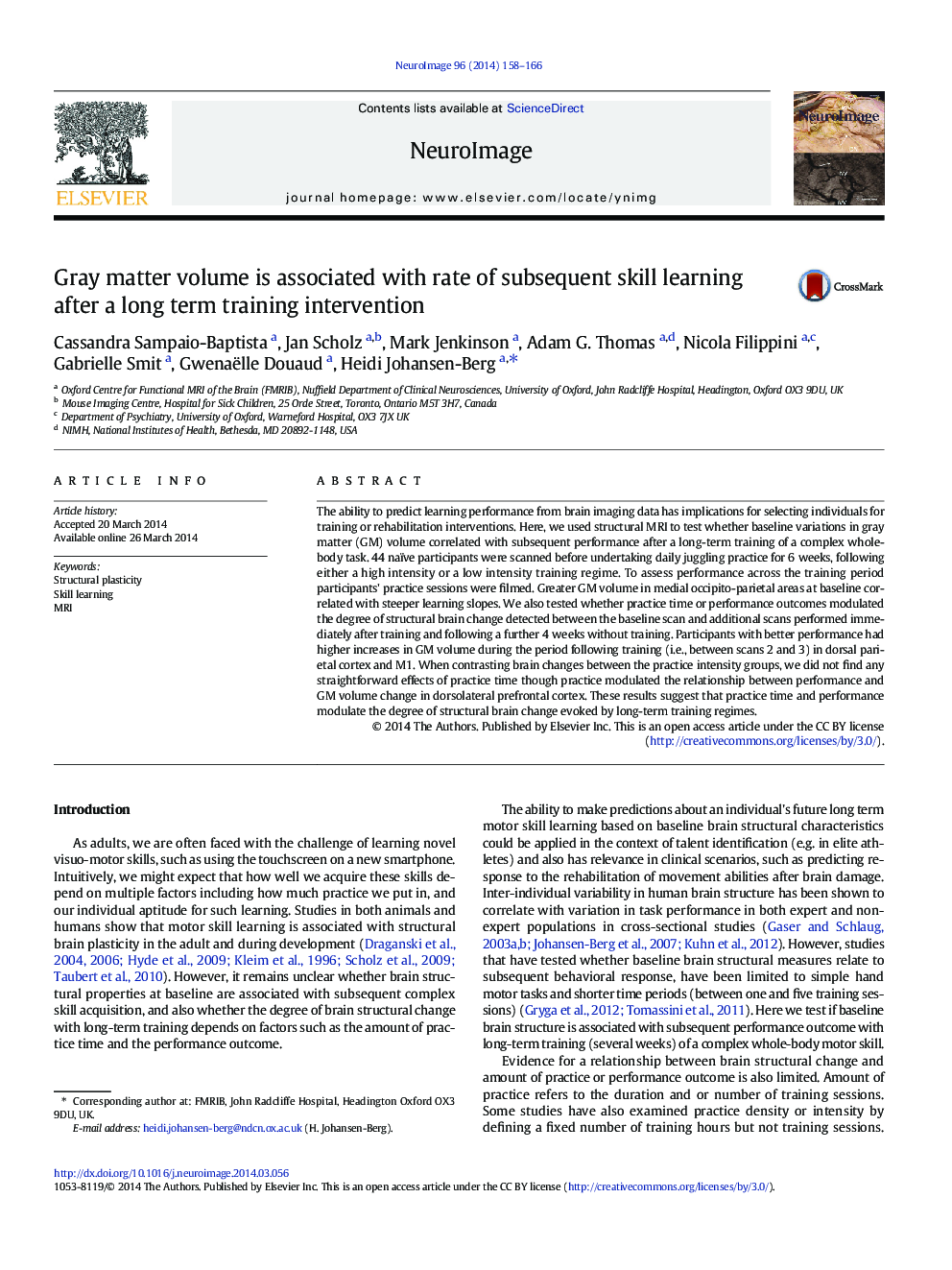| Article ID | Journal | Published Year | Pages | File Type |
|---|---|---|---|---|
| 6027197 | NeuroImage | 2014 | 9 Pages |
Abstract
The ability to predict learning performance from brain imaging data has implications for selecting individuals for training or rehabilitation interventions. Here, we used structural MRI to test whether baseline variations in gray matter (GM) volume correlated with subsequent performance after a long-term training of a complex whole-body task. 44 naïve participants were scanned before undertaking daily juggling practice for 6Â weeks, following either a high intensity or a low intensity training regime. To assess performance across the training period participants' practice sessions were filmed. Greater GM volume in medial occipito-parietal areas at baseline correlated with steeper learning slopes. We also tested whether practice time or performance outcomes modulated the degree of structural brain change detected between the baseline scan and additional scans performed immediately after training and following a further 4Â weeks without training. Participants with better performance had higher increases in GM volume during the period following training (i.e., between scans 2 and 3) in dorsal parietal cortex and M1. When contrasting brain changes between the practice intensity groups, we did not find any straightforward effects of practice time though practice modulated the relationship between performance and GM volume change in dorsolateral prefrontal cortex. These results suggest that practice time and performance modulate the degree of structural brain change evoked by long-term training regimes.
Related Topics
Life Sciences
Neuroscience
Cognitive Neuroscience
Authors
Cassandra Sampaio-Baptista, Jan Scholz, Mark Jenkinson, Adam G. Thomas, Nicola Filippini, Gabrielle Smit, Gwenaëlle Douaud, Heidi Johansen-Berg,
